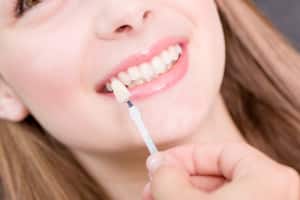 There are many factors that can damage your teeth – whether it be infections, injuries, or even habits such as grinding or clenching your teeth. Unfortunately, it can be difficult to perform normal daily tasks (such as chewing and speaking) when your teeth are damaged. Depending on the condition of your tooth, your dentist may recommend placing a dental crown to help restore its function and cosmetic appeal. Although they can’t help to completely replace your tooth by themselves, crowns are often used in conjunction with dental implants for a full restoration.
There are many factors that can damage your teeth – whether it be infections, injuries, or even habits such as grinding or clenching your teeth. Unfortunately, it can be difficult to perform normal daily tasks (such as chewing and speaking) when your teeth are damaged. Depending on the condition of your tooth, your dentist may recommend placing a dental crown to help restore its function and cosmetic appeal. Although they can’t help to completely replace your tooth by themselves, crowns are often used in conjunction with dental implants for a full restoration.
Placing A Dental Crown
The process for placing your crown is typically spread over two appointments. Your dentist will first need to prepare your tooth and its surroundings before being able to properly fit, place, and cement the “cap”-like tooth. This usually involves ensuring your tooth isn’t in any immediate danger (like disease or decay) and x-ray images for a look at your bone structure. Then, they’ll take a mold of the tooth receiving the crown for a custom and comfortable fit. While waiting for it to come back, your dentist will place a temporary dental crown (using a temporary cement) to protect your tooth. At your following appointment, the newly molded crown is placed and cemented.
Adjusting To Your New Tooth
Although you should be more careful with a temporary dental crown, there are still a few things you should avoid with your permanent crown. First a foremost; chewy or sticky foods and candies could damage your crown or even pull it off altogether. But, you’ll also want to be careful flossing around the “cap” on your tooth as well, and especially with temporary crowns.







